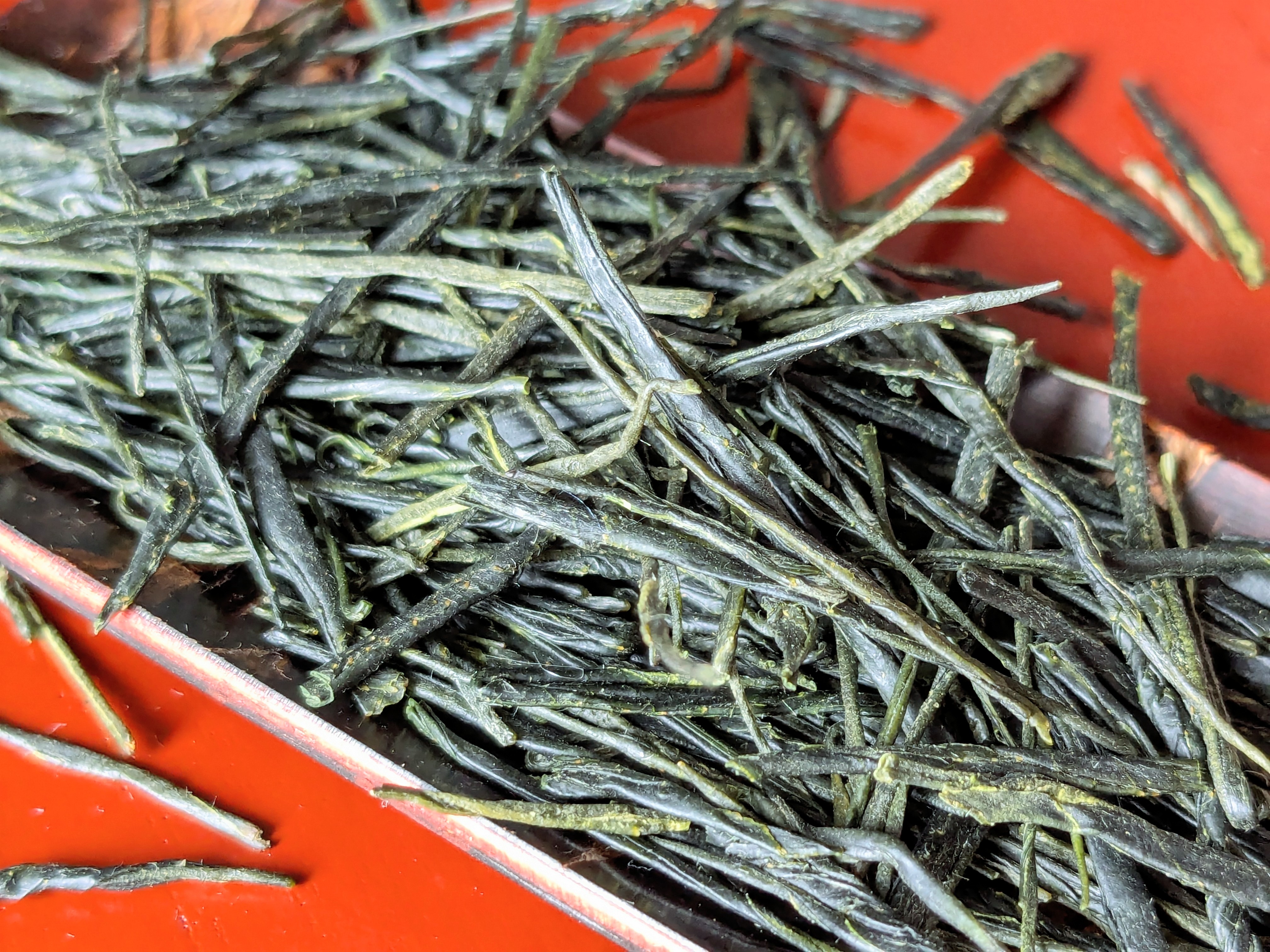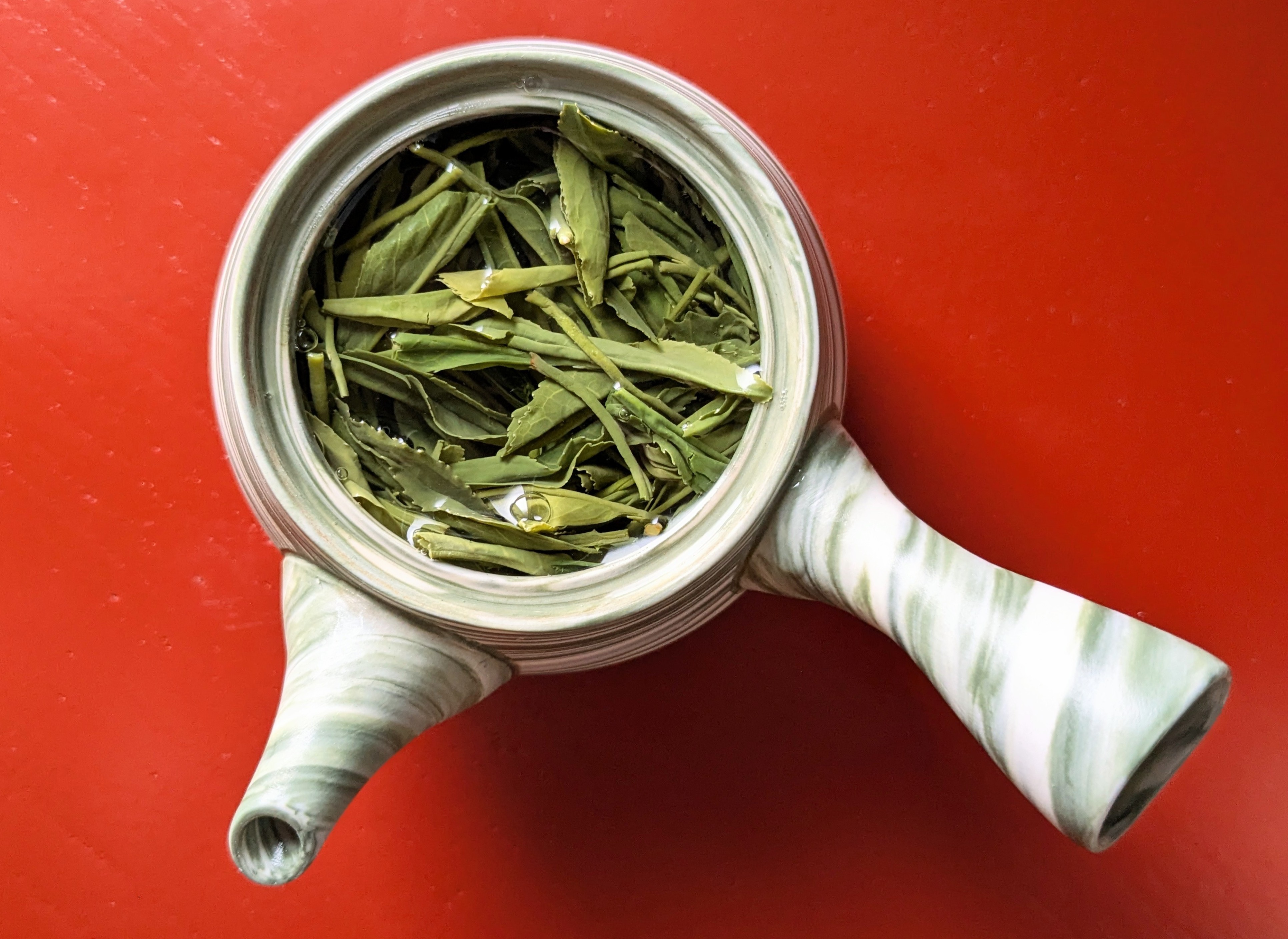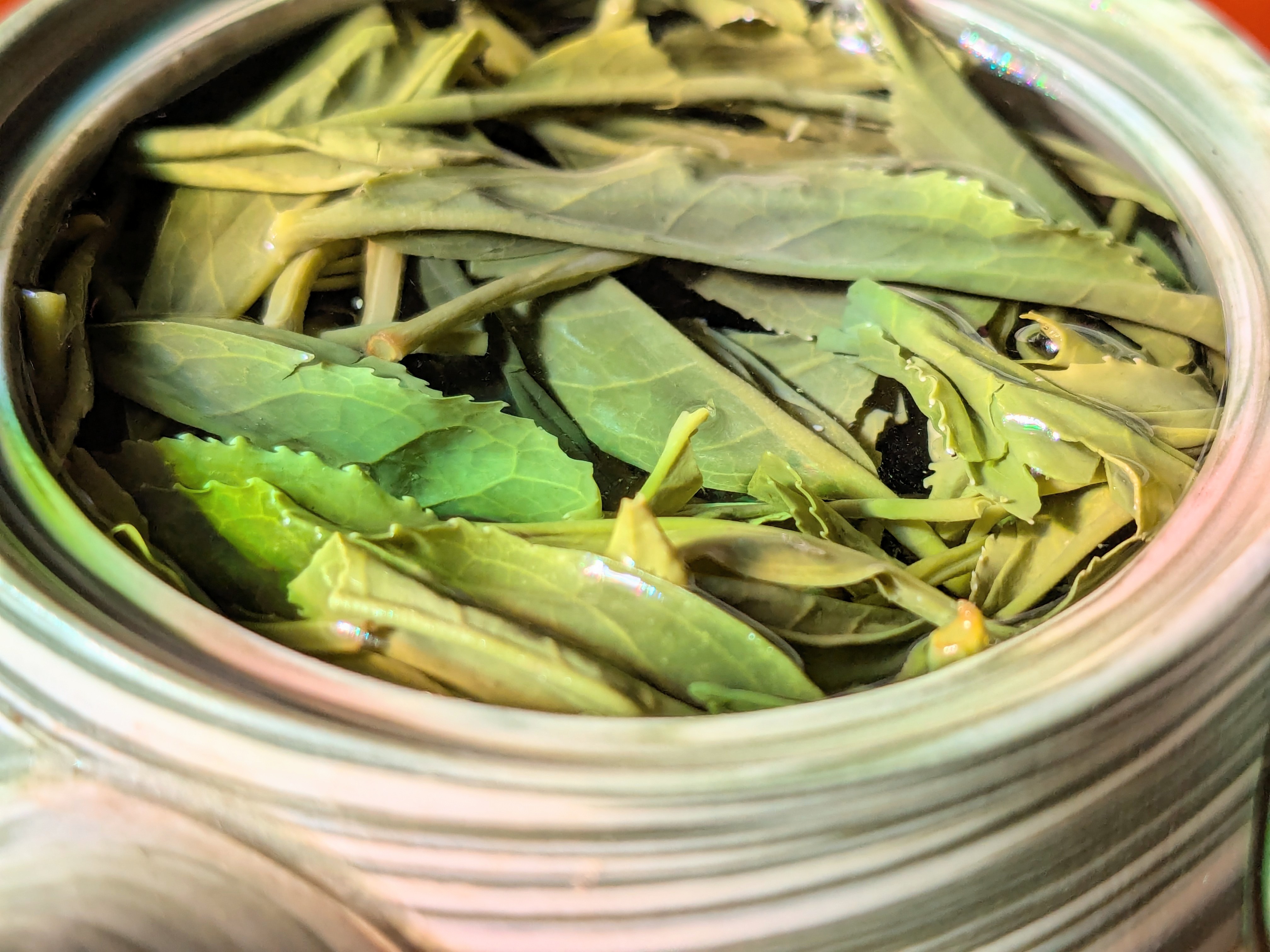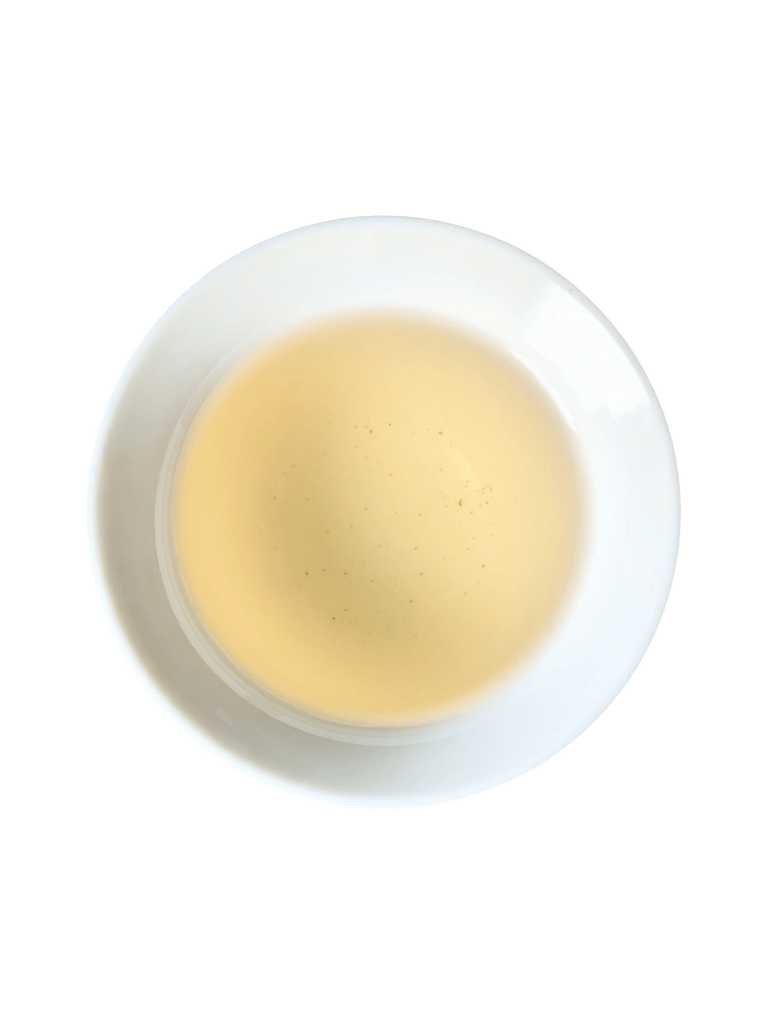I am always on the look out for new teas to try and when I saw that this Competition Grade Nagareboshi Temomicha was available via Yunomi, I knew that I had to experience it for myself as I have only ever had a handful of competition grade teas in the past, but each one has provided such a unique experience and so they are always worth paying a little extra for overall, should you have the opportunity to do so.
Only a very small amount of this competition grade, Handrolled shincha is available each year. It is made available after the competition in August, right at the time of the peak season for meteor showers – Nagareboshi 流星 in Japanese. This tea is handpicked for perfect leaf shape and quality, lightly steamed to preserve its shape, and finally Handrolled for 4-5 hours by master tea craftsmen to create perfect needles.

The aroma of the dry leaves consists of the following notes: original rice crispy squares, early summertime grass with slightly sun bleached tips, unsalted butter, matcha KitKat, white rabbit candy, milk chews & buttered petit pois, with a low level of acidity, minerality & herbaousness. Upon the addition of water, many of the notes within the aroma changed, now smelling much more savoury, with stronger vegetal notes of steamed spring springs and buttered petit pois alongside a much more prominent acidity.
The first steep of the session was bright & buttery, with much stronger umami & vegetal notes than were present in the dry leaf aroma, however they are still reminiscent of steamed spring greens & buttered petit pois. There is both a slight acidity and minerality present at the same level they were in the aroma. There are both sweet and savoury notes within this steep, but overall the savoury notes are more prominent, however within the finish and aftertaste there were those notes of rice krispy treats and a lingering creaminess.

The second steep was a little more balanced when it came to the sweet and savoury elements, with those aforementioned vegetal notes becoming a little more subdued, allowing those creamy and sweet notes to come through. When combined together, they taste like matcha KitKat and matcha white rabbit candy. The acidity and minerality are both still present, but both softer than they once were. I was thrilled to discover how well balanced this steep was and that those sweet and creamy notes were being given more of a chance to shine.
In steep three emerged a sweet & juicy fruity note that I can only describe as a mixture of both white grapes & sweet pears, dusted with icing sugar. The acidity at this point had completely disappeared, however the minerality stayed & in steep four was at it’s strongest given that by steep four, some of the stand out note found in pervious steeps were becoming much more subdued.

In hindsight I should have ended my session at steep four, but I decided not to and did a fifth steep & while It was far from being horrible, it’s just very light and didn’t really have much to it at all. Lesson learned for next time I suppose.
Texturally it is buttery and smooth, with a medium weight and a refreshing finish with subdued minerality. However if left to cool at all in the cup, a lingering slightly sharp vegetal note appears and cuts through the aforementioned notes quite abruptly, with later steeps having subtle lingering green apple juiciness.


Art Pairing: Shooting Star – II | by Yuji Watanabe
For this pairing, while I still wanted it to have been created by a Japanese artist to create a geographical connection between the tea and the pairing, I thought would go in a completely different direction than I usually would for a green tea, moving away from art that feature green heavily and instead turn my focus to the the time of the year this tea was picked.
As previously mentioned, this tea is harvested in August, right at the time of the peak season for meteor showers & something about that feels special. That feeling is what inspired me to focus on that for this pairing, which led me to this woodblock print by Yuji Watanabe, titled Shooting Star II.

There is very little information about Yuji Watanabe available, but what we do know is that he was born in 1941, and specialised in woodblock prints, very regularly using both vibrant and pastel colours throughout his work. This choice to use such abstract & vibrant colours throughout his work is just one of many reasons that his work stands out amongst the crowd.
Aside from the aforementioned links to the artist and the subject matter, I do also believe there are other ways in which this piece mirrors aspects of the flavour and aroma profiles of this tea. The sharpness cutting through like the stars in the layered blue green background, the creamy notes represented by the lightest layer of the background mimicking the way in which they were constantly present but more of an underlying note when compared to others. Finally, the complex layered aromas and flavours this tea possesses are visually represented within the layers of this print, each defined but softly beginning to melt into each other, just like the notes within each steep of this tea.
There is no other artwork out there that could pair as perfectly with this tea as this one does.
If you want to try this tea for yourself you can find it here, on the Yunomi website.
Until next time, Happy Steeping – Kimberley
Leave a comment